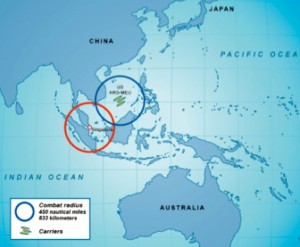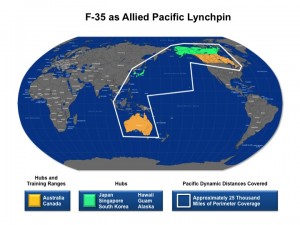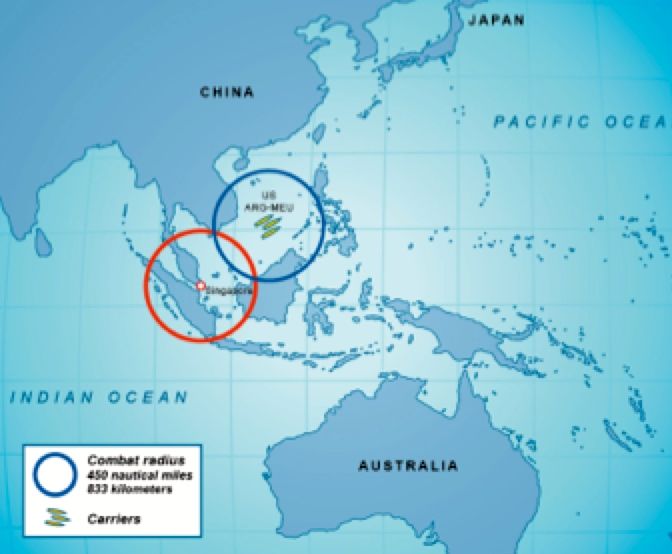2014-03-09 By Robbin Laird
It is clear that the F-35 global enterprise is a unique enabler of the entire re-set of US and allied airpower.
Yet this crucial and even central reality is hardly recognized in the mounds or should one say piles of commentary on the F-35 program.
And indeed, notably in testimony of defense officials in front of Congress, is the absence of emphasis upon how central the allies are to the program, or that the F-35 has recently become the plane of choice for all of the core Pacific allies.
Allies are not simply “partners” in the program they are the enablers of 21st century air combat development and approaches.
Allies are not simply “following” the US lead; they are innovating on their own and will infuse the F-35 global enterprise with the spirit of innovation and invention, not mortgaged by the “sequestration” somnolent evident in Washington.
Notably absent from the recent 60 minutes program was a SINGLE comment on this aspect.
Yet is not just about allies buying US kit, it is about something fundamentally more profound: the reset of US and allied airpower.
Leadership is demonstrated; not assumed .
The F-35 as a global enterprise is clearly a foundational force or forcing function force for other developments.
It is not simply a means to an end (modernizing the tactical aircraft fleet) but a forcing function force for fundamental change.
There are several key aspects of the F-35 global enterprise, which are significant for allies as well as Americans.

First, it will be in production for a long time, which means that allies can buy with confidence that the system will be there when they need it. There will be no repeat of the Aussie F-111 problem of buying and then the USAF retiring its aircraft leaving the Aussies to foot a significant maintenance bill
The US is up and down in buying numbers of aircraft but with the coming of three production lines (Fort Worth, Cameri, Japan) the allies will be able to buy as the US goes up and down.
Although Lockheed Martin is the prime contractor, the key designers of the combat systems are among the world’s best combat systems companies. As Ed Timperlake has highlighted, the combat systems have their own R and D vectors, which will drive capabilities up over time, which will be reflected in the aircraft.
The weapons, which will be fitted onto the F-35 or operated by the F-35 in a sensor shooter relationship, will be developed globally.
For example, the Kongsberg missile developed for Norway will be available immediately for any F-35A user. The new MBDA Meteor missile is also a case in point of allied investments also shaping a global market
This is historically unprecedented and allows global partners to build for themselves and for the global consortium.
For example, a country like Australia with unique ranges and key scientific capability (demonstrated in the hypersonics area) can become a major designer and producer of missiles for the F-35.
And as one Aussie engineer commented: “Clearly we see the opportunity inherent on adding longer range capabilities for strike associated with the F-35. And one needs to realize that the technology barriers that have hampered the development of a scramjet powered vehicle operating in the low hypersonic region have been broken.”
As a software upgradeable aircraft, users reflecting collaborative combat experience will do the code rewrite. This is already happening with the Wedgetail in Australia, which is a launch point for the use of new software upgradeable aircraft.

The program has built in a global sustainment capability from the ground up, which allows for the clear possibility of shaping a very different approach to global sustainment. Programs developed first for the US which then add global customers face a significant parts and support problem because there was never a thought of building in a global sustainment approach.
The Italians have already built a regional sustainment center in Italy for Europe and Med operations.
The manufacturing program is already mature and there will three FACOS: two already exist in the US and Italy and a third to be added in Japan.
And operationally, a global fleet will provide significant opportunities for innovation by the US and its partners in building out a new combat approach around distributed operations.
And the usual comparisons of stealth China and Russian aircraft versus the F-35 ignore three crucial points:
The US and several allies are investing in the program and will use the program. As a result, it is unlikely that Russia or China will win the fifth generation investment race.
The USAF has several decades of experience with stealth, which neither the Russians nor Chinese have.
The con-ops of F-35 facilities an aerospace combat cloud and distributed operations; neither is a strong suit for authoritarian controlled air combat forces such as those of the Russians and Chinese.
In short, the reality is the reality
The opportunities are there for the new generation of I-Pad generation pilots and the 21st century air combat innovators.
The “Right Stuff” is back.
But of course you actually have to talk to the new generation of pilots, maintainers, and manufacturers of the 21st century air combat force to feel the enthusiasm and see the rethinking going on daily.
It takes time, but the enthusiasm from the new generation is palpable.
And I would add that I am writing this piece from Canberra, Australia where this week The Williams Foundation is hosting a conference on the 5th generation opportunity.
I maybe physically down under but these folks are certainly not when it comes to sorting out the future.


